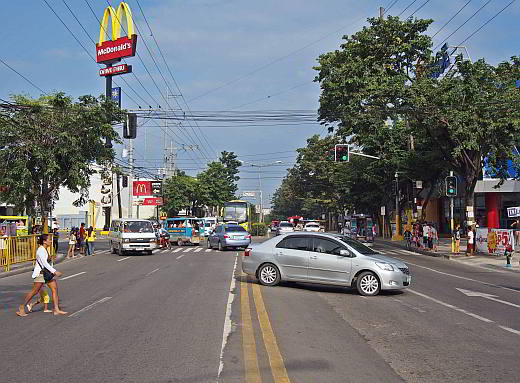
A feasibility study for the stormwater catchment of the proposed two lane underpass at Natalio Bacalso Avenue and F. Llamas intersection is expected to be finished this year. (CDN PHOTO/CHRISTIAN MANINGO)
Department Order 93 signed by Public Works and Highways Secretary Rogelio Singson details guidelines and procedures for the proper pruning or cutting and/or cutting of trees.
According to the order, trimming can only be done on branches that have weak, V-shaped or narrow angles or if ts diameter is less than five centimeters.
Strong U-shaped branches should be retained and may only be removed if it poses danger to safety.
Trimming or pruning can be done either through crown thinning or crown raising.
Crown thinning reduces the size of the tree in order to rejuvenate growth.
Crown raising
When thinning the crown, lateral branches (originating from the trunk) should be as evenly spaced as possible.
“Only prune away branches that cross other branches or run against them; and lastly, never remove more than one-fourth of a living crown at once. However, if removing more than this quantity, pruning should be spread over a number of years,” the order stated.
Crown raising can be done by “carefully pruning” the tree to provide clearance for pedestrians.
Live branches should be maintained on at least two-thirds of the tree’s height.
“Avoid removing too many branches near the bottom half since the tree may not be able to develop a strong stem,” it said.
Safe passage
Trees damaged by storms or vandalism or those with dead limbs should also be pruned as soon as possible to avoid insect and disease problems that may develop.
If tree limbs and branches grow too close to utility lines, trimming should be done by competent representatives from the concerned utility company.
“Cutting of trees should only be done during disaster clearing operations when such trees, toppled by heavy winds, dangerously block the safe passage of motorists and pedestrians, otherwise, cutting should be conducted only upon the approval of the DENR and/or the local government unit concerned,” the order said.